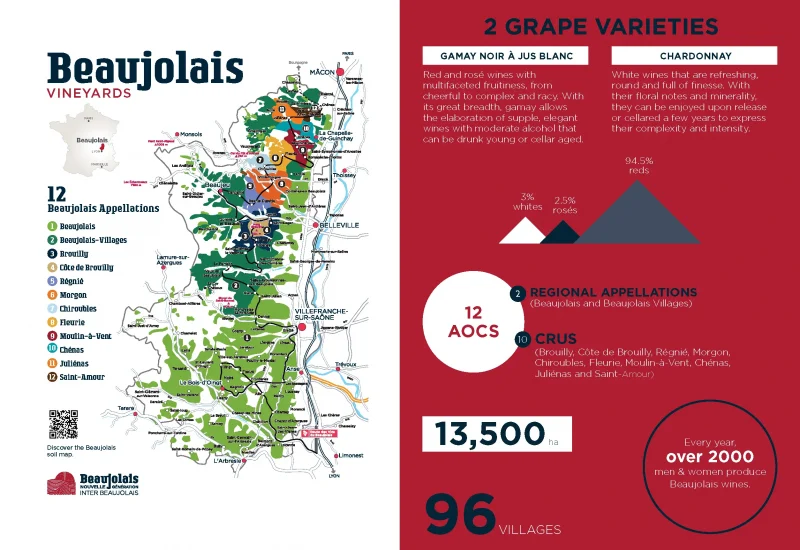Blog
The joy of Beaujolais
The “everyday light/chillable red” category has many viable contenders – Valpolicella and the like – and though Basic Bojo holds a special place in the market, it is a crowded one. However, the key to the recent success of Beaujolais in retail is customer interest in the more serious Cru wines, especially from smaller growers.
These beautiful Cru gems fill an interesting position in the market for French reds – delicate like the Pinot of “Burgundy Proper” but astonishingly keen value: a family-estate Morgan is much the same price as a near-neighbour negoce Macon Rouge, cast the net further to the miuch-in-demand Cote d’Or, and basic Bourgogne Rouge prices are up with the very top of Beaujolais Cru. Then there’s the lightness issue, nearby Rhone wines struggle in these days of hotter climate to achieve less than 15% abv; even if they are ready to drink young, many customers don’t want such big bruisers. On the subject of age (of wines, not consumers), top Bordeaux doesn’t start to charm until maybe 8 years of age, whereas even the grandest of Cru Beaujolais is fun at 2 years old. Consumers often don’t want to wait these days.
The rise in quality over the last years is astonishing: lower yields; less carbonic; rigorous selection; more estate-bottling and less reliance on the ubiquitous negoce and co-op operators, has remade Beaujolais, cast off the bubblegum 4-day ferment mantle, created a new class of ready-to-go wines to be taken seriously at last, which taste gorgeous too.
Given such a fascinating niche in the market, the Beaujolais Crus, and Grower Wines generally, are a match for Pinot and the best of France – ready-to-wear, at convincing prices.





Leave a reply
You must be logged in to post a comment.